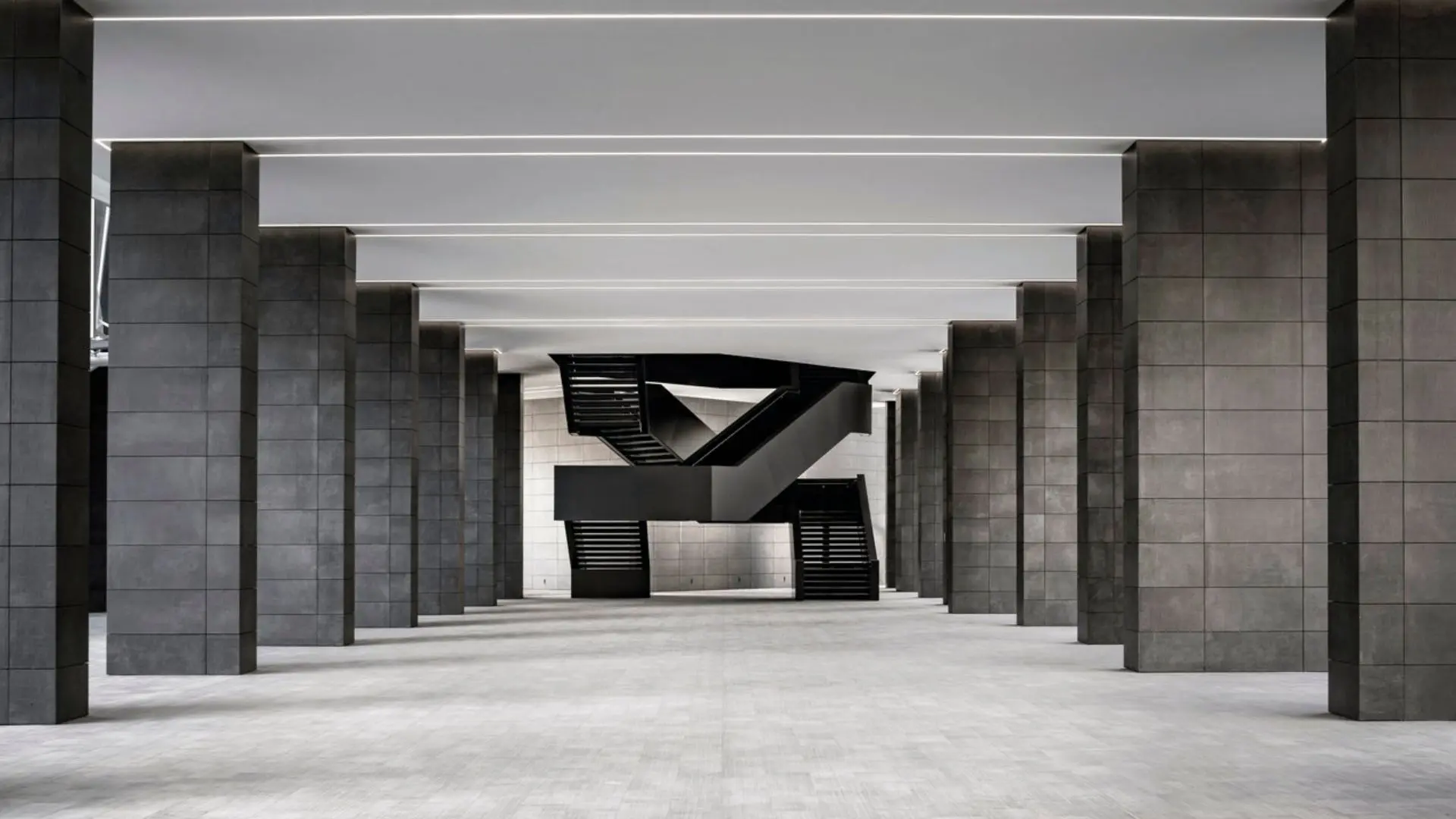How the façade of this “smog-eating” building in Milan gobbles up pollutants
De Castillia 23 is an office redevelopment, which features Iris Ceramica Group’s Active Surfaces® to create a prismatic exterior made up of antibacterial, anti-pollution and self-cleaning surfaces.

Over the last decade, the Garibaldi-Repubblica neighbourhood has undergone redevelopment, aiming to link it to the city after being isolated for thirty years due to the construction of the rail network. Part of this transformation is the renovation of De Castillia 23, which returns an innovative and contemporary building to the city.
Located north of the city’s centre, the complex, owned by Gruppo Unipol, comprises two structures 53 and 15 metres high, both of which have been redesigned by local architectural firm Progetto CMR.

Both volumes intertwine with protruding terraces, to create a captivating spectacle orchestrating an ever-changing interplay of light thanks to their use of triangular-shaped walls and Active Surfaces®: the eco-active ceramic materials by Italian manufacturer Fiandre Architectural Surfaces, an Iris Ceramica Group brand. These surfaces include innovative, patented features developed by the Group’s R&D team in partnership with the Department of Chemistry of the University of Milan.
Thanks to humidity and light the properties of Active Surfaces® transform these ceramic slabs into eco-active materials with antibacterial and antiviral, anti-pollution, anti-odour and self-cleaning properties. Moreover, they are fully recyclable, made from 40% recycled materials, and their properties remain effective even under artificial light.

As a result, they have the capacity to degrade hazardous pollutants that come into contact, such as nitrogen oxides (NOx) and other volatile organic compounds. When used on façades, harmful molecules are neutralized, improving the air quality in and around the building.
They cover 16,088 square metres of the De Castillia 23, counteracting 59 kg per year of nitrogen oxide according to the University of Milan. That’s equivalent to over 200,000 square metres of green space, hence the structure being classified as a “smog-eater”, the name given to buildings designed to help reduce air pollution in urban areas.

“Porcelain surfaces were installed with visible anchoring brackets, a solution by Granitech – the technical division of Iris Ceramica Group – that ensures the buildings’ long life, especially high-rise buildings, wall durability and energy efficiency”, explains Progetto CMR. “An air chamber between the wall and cladding creates natural ventilation, which offers substantial benefits in removing heat and moisture, and also excellent comfort inside. It also eliminates thermal bridges, with consequent energy savings, and maintains the efficiency of the external insulation over time since optimal ventilation keeps it perfectly dry.”

“The surfaces are effective when exposed to UV, solar, or LED lights, and their composition renders them resilient against viruses and bacteria, including MRSA, known for its hazardous impact on human health.”
Since the late 20th century, architects and scientists have been teaming up to address the environmental impact of architecture, posing the question: is it possible—and economically feasible—to design and construct buildings that can passively clean smoggy urban air?

In short — yes. By leveraging natural processes, such as photosynthesis or chemical reactions, buildings can literally capture pollutants from the surrounding air. Notable examples include the use of photocatalytic materials in architecture, developed with the ability to break down these molecules when exposed to light, which is the process utilised here.
In particular, “smog-eating” buildings have offered promising solutions for improving air quality, despite drawbacks including their effectiveness, durability, and cost.

All of these factors can vary, in part because their materials require regular maintenance and the consideration of potential side effects. Still, ongoing research, especially since the coronavirus pandemic, aims to enhance performance and affordability for broader adoption in sustainable architecture.
In the interim, architects who employ these materials are coming up with clever ways to mitigate some of these issues. Progetto CMR’s use of Iris Ceramica Group’s Active Surfaces®, for example, leans on the manufacturer’s patented technology, which transforms ceramics into an antibacterial, antiviral, self-cleaning, anti-polluting and anti-odour material.

“Their use on the external façade, and continuous exposure to light and weather make this property particularly effective, as simple rainfall keeps the façades clean.”
This focus on environmental and social well-being extends indoors, where Progetto CMR architects prioritise natural light, achieved through spacious balconies providing shade in summer and light in winter. This has created a significant increase in both diffused and total light, leading to reduced use of artificial lighting and energy consumption.
In addition to their visual appeal, the selection of porcelain surfaces for the façades, balcony flooring, and outdoor spaces was motivated by the material’s durability. With a range of finishes designed to suit various needs, these eco-active surfaces provide practical benefits such as enhanced performance (including anti-slip properties where required) and ease of maintenance. Their easy-to-clean properties help to maintain hygiene in bathroom areas, for example.

“The result is a state-of-the-art, sustainable complex”, says architect Massimo Roj, Progetto CMR CEO. “More importantly, the building has finally been returned to the community and, due to the client’s foresight, will be a new focal point in a Milan which looks to the future”.
De Castillia 23 was given the prestigious Award of Excellence 2022 at the Council on Tall Buildings and Urban Habitat (CTBUH) for its outstanding architectural achievements. The project, distinguished in the “Under 100m” category, was recognised for the integration of eco-active Active Surfaces® materials, which underscored a holistic approach to urban development whilst providing a model for future architectural endeavours.













